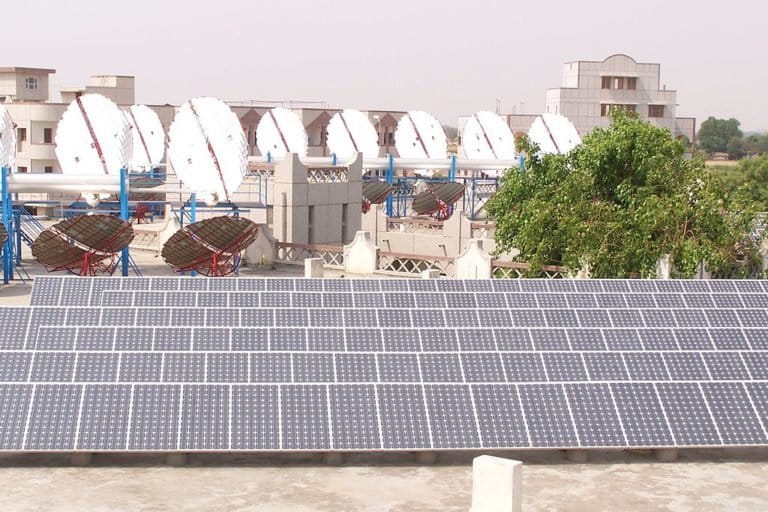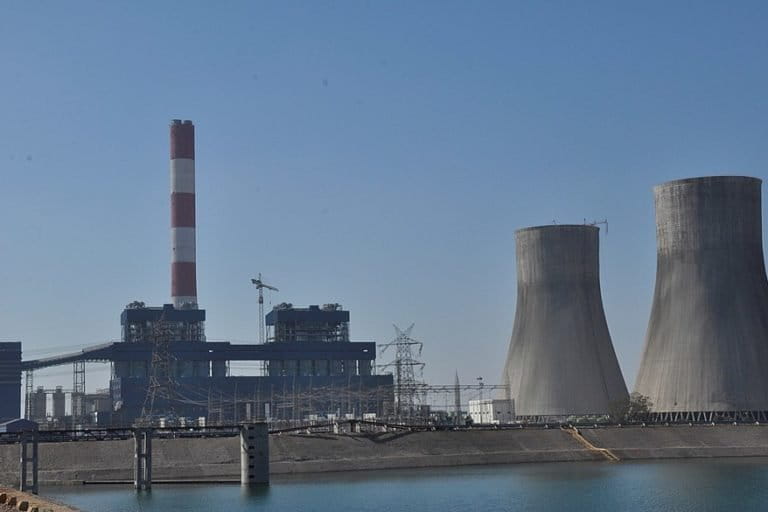- The world is not doing enough to limit the rise in global temperature, notes an analysis of 184 pledges made by countries in the 2015 Paris Climate Agreement.
- The analysis of pledges ranks about 75 percent of them as “insufficient” to tackle climate change impact. Among the four biggest emitters of greenhouse gases — China, United States of America, European Union and India — only European Union’s pledge to tackle climate change was deemed sufficient by the report authors.
- It highlighted that to create an additional cumulative carbon sink as per India’s commitment in the Paris Agreement, the country would need to double its current rate of forest cover expansion.
- Independent experts have however questioned the report for ignoring the disparity between nations and their capabilities while ranking the pledges.
The pledge made by India in the Paris Agreement 2015, to contribute to reducing global climate change is “insufficient”, said a report released on November 5. It added that for achieving the targetted carbon sink by 2030, India would need to “more than double its current rate of forest cover expansion.”
Under the Paris Agreement, India had committed to creating a cumulative carbon sink of 2.5-3 billion tonnes of carbon dioxide equivalent by 2030. Currently, India’s forest and tree cover is about 24 percent of its geographical area, according to India’s State of Forest Report 2017 and India has repeatedly highlighted that it wants to bring at least 33 percent of its total area under green cover. The draft of India’s National Forest Policy 2018 also mentions that to achieve the national goal for eco-security, the country should have a minimum of one-third of the total land area under forest and tree cover.
The report, ‘Truth Behind the Climate Pledges’, published by the Universal Ecological Fund, a United States of America-based nonprofit research organisation working on issues related to climate change, provided an examination of climate pledges by a panel of experts from the United Kingdom, United States, Argentina and Austria. The experts consisting of climate scientists and representing scientific organisations, ranked the countries based on their commitments to reducing emissions of greenhouse gases and identified weaknesses in the voluntary pledges.
The team analysed the 184 voluntary pledges by countries under the Paris Agreement and assessed that almost 75 percent of the total climate pledges made under the agreement are “inadequate to slow climate change,” and some of the world’s largest emitters like the U.S., China and India will continue to increase emissions.
The analysis looked at the adequacy of the pledges to contribute to reducing greenhouse gas emissions globally by 50 percent by 2030, and whether these pledges are likely to be implemented. Other than pledges, the report authors used data from other official reports submitted by governments and reports by international agencies, for the analysis.
The Paris Agreement aims to limit the global temperature rise well below two degrees Celsius above pre-industrial levels and to pursue efforts to limit the temperature increase even further to 1.5 degrees Celsius.
Report ranks less than 20% of country pledges as “sufficient” for reducing emissions
The report noted that emissions from the top four emitters account for 56 percent of global greenhouse gas (GHG) emissions – China (26.8 percent), the U.S. (13.1 percent), the European Union and its 28 member states (nine percent) and India (seven percent).
According to the report, of the total 184 pledges, only 36 were deemed “sufficient” based on commitments to reduce emissions by at least 40 percent by 2030, 12 pledges were considered “partially sufficient” for their commitments to reduce emissions between 20-40 percent by 2030 and 136 pledges were partially or totally “insufficient”.
As per the report, sufficient commitments were the climate pledges that committed to reducing emissions by 40 percent as they are broadly in line with the overall need to cut emissions by at least half by 2030. Partially sufficient pledges were those that committed to reducing emissions by 20-40 percent. Nations that pledged emissions reduction of below 20 percent were deemed partially insufficient pledges and nations that had no emission reduction targets in their pledges and those whose commitments rely on more than 50 percent of international financial support, were deemed insufficient.
Only the 28 European Union nations and seven others have committed to reducing emissions by at least 40 percent by 2030 under the Paris Agreement, the report added.
“The comprehensive examination found that with few exceptions, the pledges of rich, middle income and poor nations are insufficient to address climate change. Simply, the pledges are far too little, too late,” said Robert Watson, former chair of the Intergovernmental Panel on Climate Change and co-author of the report.

Though the report ranked Indian’s pledge as “insufficient”, it noted that India’s carbon dioxide emissions per person have doubled since 1990, but its historical emissions were very low, and current emissions are significantly lower than most industrialised countries.
“Currently, a person in India emits less than two tons of carbon dioxide per year, which is less than half of what a person in Sweden or a third of what a person in Italy emits,” the report observed.
Can developing and developed nations be judged with the same yardstick?
Chandra Bhushan, who is an independent climate change expert in India, was critical of UEF’s report for oversimplifying the climate change issue.
“Even if we look at this report only from the perspective of capability (and ignore historic responsibility), this report has major definitional issues and falls. How can a developing country like Bangladesh and a developed nation from Europe be measured on the same yardstick of their capacity to tackle climate change? Such reports will only create further discordant among the developed and the developing countries,” Chandra Bhushan told Mongabay-India.
He said the issue with such reports is that they look at the whole climate change issue from an oversimplified lens as they put all countries in the same basket.
“To counter such a report, scholars from developing nations will come out with a completely opposite perspective in which they will put all the blame on the developed countries. All these opposite views and reports leads to conflicting opinions on climate change debate at the international level. For close to 30 years, we have seen nations competing with each other while discussing climate change at the UNFCCC (United Nations Framework Convention on Climate Change) level.
What we instead need now is a collaborative and cooperative approach otherwise nothing is going to work, said Bhushan, adding that, “My request to the authors, who are highly respected scientists, is to develop such a matrix that considers the capabilities of countries while judging whether their pledges are sufficient or insufficient.”.
Similarly, Karthik Ganesan, a research fellow at Delhi-based Council on Energy, Environment and Water, was critical of the report.
“Fairness considerations have been set aside in this evaluation. Yes, collectively we have all failed and the consequences will be severe. This calls for greater collaboration to help everyone make bigger strides,” Ganesan told Mongabay-India.
India’s goal to reduce emission intensity may be met, but emissions will increase
Besides the forest cover goal, for the 2015 Paris Climate Agreement, India had also pledged to unconditionally reduce the emission intensity of its Gross Domestic Product by 30-35 percent from 2005 level by 2030 and achieve 40 percent of its installed power capacity from renewables.
On India’s promise of reducing the emission intensity (of all greenhouse gases), the report noted India’s progress of already having reduced its emission intensity by 12 percent from 2005 level to 2010 and by 21 percent over the 2005-2014 period.
Emission intensity measures the GHG emissions per unit of economic activity (GDP in this case).
“By just implementing policies already in place, India is likely to achieve a 30-35 percent reduction (in emission intensity) by 2030 and may even overachieve it,” explained the report but added that India’s GHG emissions have increased by about 76 percent between 2005 and 2017, and are expected to continue to increase due to economic growth.
“Its carbon dioxide emissions have more than doubled over the period 2005-2018. India’s commitment to reduce its emissions intensity is indeed encouraging, but it will not result in a decrease in GHG emissions below current levels. Thus, India’s pledge was deemed insufficient to contribute to reducing global emissions by 50 percent in 2030,” the report noted.

It highlighted that India has increased its installed electricity generation capacity by three-fold since 2005, but 57 percent of its generation still dependent on coal.
“The share of non-fossil fuels electric power capacity has increased as well – from 30 percent in 2005 to 35 percent in 2018 of which 20 percent are renewables. Thus, by continuing this increasing trend, India could achieve a 40 percent non-fossil-based power capacity earlier than 2030. Although renewables are becoming more cost-effective than coal-fired power plants in India, the expansion of non-fossil fuels electric power may not compensate for the lack of action to reduce the share of electricity generated by coal,” noted the report.
“China and India have both submitted pledges to reduce their emissions intensity relative to GDP by 2030, which are likely to be met, but their emissions will continue to increase in the next decade due to economic growth,” said the report while adding that thus pledges of both India and China are ranked as “insufficient” as they will not contribute to reducing global emissions by 50 percent by 2030, as per the authors’ analysis.
Read more: Climate emergency: India says it can only aspire to implement already promised climate actions
Pledges of over 150 nations rely on technical and financial assistance
According to the report, of the 184 pledges by nations, 152 are from nations responsible for 32.5 percent of global GHG emissions. Of that, 127 countries or almost 70 percent have submitted conditional plans to reduce GHG emissions, but these pledges rely on “technical assistance and funding from wealthy nations, estimated at 100 billion dollars annually, for their implementation.”
“Provision of this assistance has been more difficult than was anticipated in 2015. Both the United States and Australia have stopped making contributions,” the report said.
“All countries need to reduce emissions to meet the Paris Agreement targets, although not all countries have equal responsibility because of the principle of differentiated responsibility, historical emissions, current per-person emissions and the need to develop. Some countries will require international assistance,” the report observed.
Pointing out towards lack of action from nations, 97 percent of the 184 climate pledges are the same as those initially submitted in 2015-2016 after the Paris Agreement was adopted and only six countries have reviewed their pledges – four countries increased their plan to cut emissions and two nations weakened their pledges.

“Even if all climate pledges which are voluntary are fully implemented, they will cover less than half of what is needed to limit the acceleration of climate change in the next decade,” said co-author Robert Watson.
The report noted that to limit the rise in global average temperature to 1.5 degree Celsius above pre-industrial times, a Paris Agreement goal, the “action to address climate change must double or triple within the next decade to reduce emissions by 50 percent by 2030.”
“Based on our meticulous analysis of the climate pledges, it is naïve to expect current government efforts to substantially slow climate change. Failing to reduce emissions drastically and rapidly will result in an environmental and economic disaster from human-induced climate change,” said James McCarthy, who is a professor of oceanography at Harvard University and a co-author of the report, in a statement.
“Leaders need to adopt new policies to close coal-fired power plants and promote renewable and carbon-free power sources such as wind, solar and hydropower. These are tasks which individuals can’t do, but can reasonably expect their leaders to,” he added.
Banner image: India has a target of having 33 percent of its geographical area under forest cover. Photo by Ashwin Kumar/Flickr.













